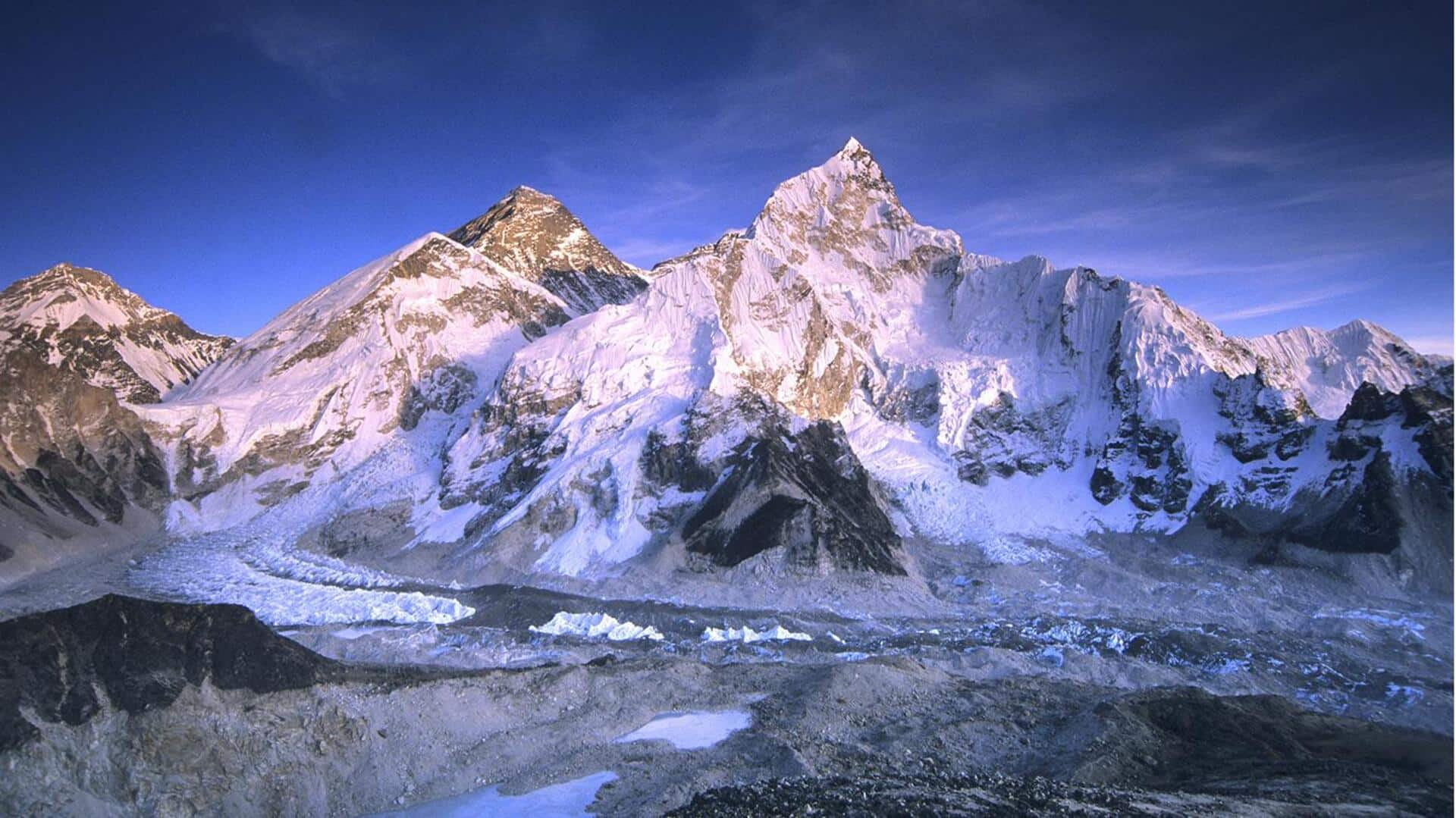
Snow line retreats 500ft—Why Everest ice is disappearing so fast
What's the story
Mount Everest, the world's highest peak, is witnessing a drastic change in its snow line—the elevation above which snow remains on the ground throughout the year.
Scientists have noted that the snow line has lowered by nearly 490 feet in less than two months.
The change was observed between December 11, 2024 and January 28, 2025, during which the snow line retreated from roughly 20,000 feet to some 19,510 feet.
Process explained
Sublimation: The process behind Everest's snow line retreat
The retreat of Everest's snow line is due to a process called sublimation.
Unlike melting, sublimation is when snow turns directly into water vapor due to the Sun and dry air.
Essentially, the snow molecules skip the liquid state and turn directly into gas.
Research from Colorado State University states that this process is fueled by strong winds, low humidity, and unusually warm temperatures.
Factors at play
Climatic conditions influencing sublimation on Everest
Mauri Pelto, a glaciologist and member of NASA's Earth Observatory advisory board, has said that warmer and drier conditions are pushing the winter snow line higher.
This change in seasonal snow settling at higher altitudes was corroborated by satellite imagery from NASA's Landsat 9 on January 20, 2025.
The images showed a decrease in this year's snow cover at mid-level altitudes as compared to January 2022.
Ongoing trend
Everest's snow line shift: A long-term pattern
Pelto's research indicates that the change in Everest's snow line is a long-term trend.
The snow line was already above average at the start of winter due to a dry start to 2024.
Similar elevated snow lines were recorded in January 2021, 2023, and 2024, pointing to a shift rather than a temporary anomaly.
Notably, 2022 was the only recent year when January snow lines remained typical.
Unique pattern
Himalayan glaciers' unique snow accumulation pattern
Unlike glaciers in North America and Europe, which gain mass from winter snowfall, Himalayan glaciers mainly accumulate snow during the summer monsoon (June to September).
This makes winter snow especially important for maintaining ice levels.
If the snow lasts long enough, it can eventually turn into glacial ice. However, less snow accumulation could lead to long-term glacial shrinkage and impact freshwater supply.